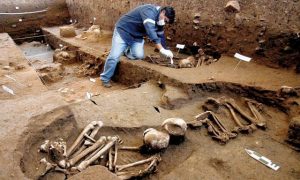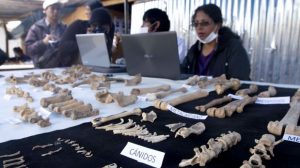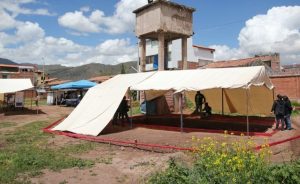Marcavalle Returns as an Important, Active Archeological Site

Underneath the city of Cuzco are layers and layers of the past, a past that extends back long before the Incas. In each street and each district their are particular pieces of the past, some seeming to go back further than others.
One site, critical for grasping the history of the Valley of Cuzco, is that of Marcavalle, currently a suburb for journalists and the site of a rehabilitation center for youths. Archeologists have long bemoaned the growth of the city of this site, since the construction of new buildings and gardens destroys the evidence of the settlement and development of the Valley of the Huatanay in which Cuzco sits.
In Marcavalle archeologists found evidence of people increasingly settling down and eating ever more domesticated food. It marks a very important period that is called the Middle Formative and dates back to some 3,500 years ago. Marcavalle is where archeologists discovered the villages in which people gathered and lived their lives.

As a result, the name of the site has come to represent this important period that corresponds to the rise of high civilization in nearby areas, such as on Lake Titicaca. Marcavalle was evidently drawn into the sphere of influence of the Lake through trade.
Bruce Bauer describes the growth of the villages and their society as follows:

The Middle Formative Phase in the valley is represented by a series of undifferentiated settlements, which began as hamlets and grew increasingly important through time. We can speculate that these villages would have had leaders (so-called Big Men), whose positions of authority were highly unstable. Particularly successful leader may have gained considerable authority over their lifetime. Repetitively successful individuals, family groups, or lineages would have given rise to the beginning of ranked village societies through this long period.

Bauer quotes Karen Mohr Chavez, one of the archeologists who have worked at the site in her description of the villages.
While each village, including Marcavalle, was likely relatively self sufficient, each developed its own local specialties, as the restrictions accompanying sedentism limited direct or easy access to resources . . . . No direct evidence was found to indicate social stratification, or craft specialization based on principles other than age or sex.
Although archeologists and other scholars have worked to save the site, it now lies almost entirely under the city. Bauer simply says it is “now nearly destroyed”.
Thus, it was with some surprise that a discovery of new funerary remains from Marcavalle hit the news wires earlier this month.

The Dirección Desconcentrada de Cultura de Cusco announced that an excavation within the rehabilitation center discovered “a rustic, semicircular wall, pottery, stone and obsidian proyectile points,” as well as skeletal material from two adults, an infant, and two adolescents.
Other reports trumpet that the skeletons are the first complete finds of the Formative Period in more than fifty years of research.
The skeletons are said to have beaded necklaces and bracelets. “Also found were thousands of ceramic fragments decorated with human faces and figures of animals in Marcavalle style; obsidian tools; and camelid, deer, and rodent bones.” The animal bones probably represent food sources.
“The excavated area may have been a domestic space which was probably then used for burials.”
Within the precincts of the Rehabilitation center, archeologists report there may be some twenty sites worthy of excavation.
The story of Marcavalle and its contributions to understanding Cuzco’s history is far from over, despite urbanization and its destruction of archeological evidence.




